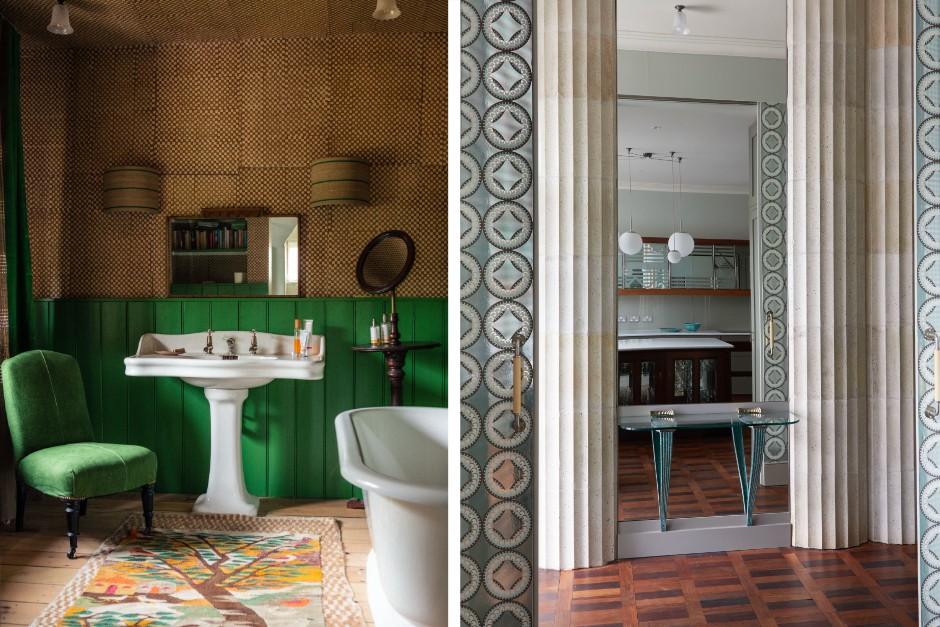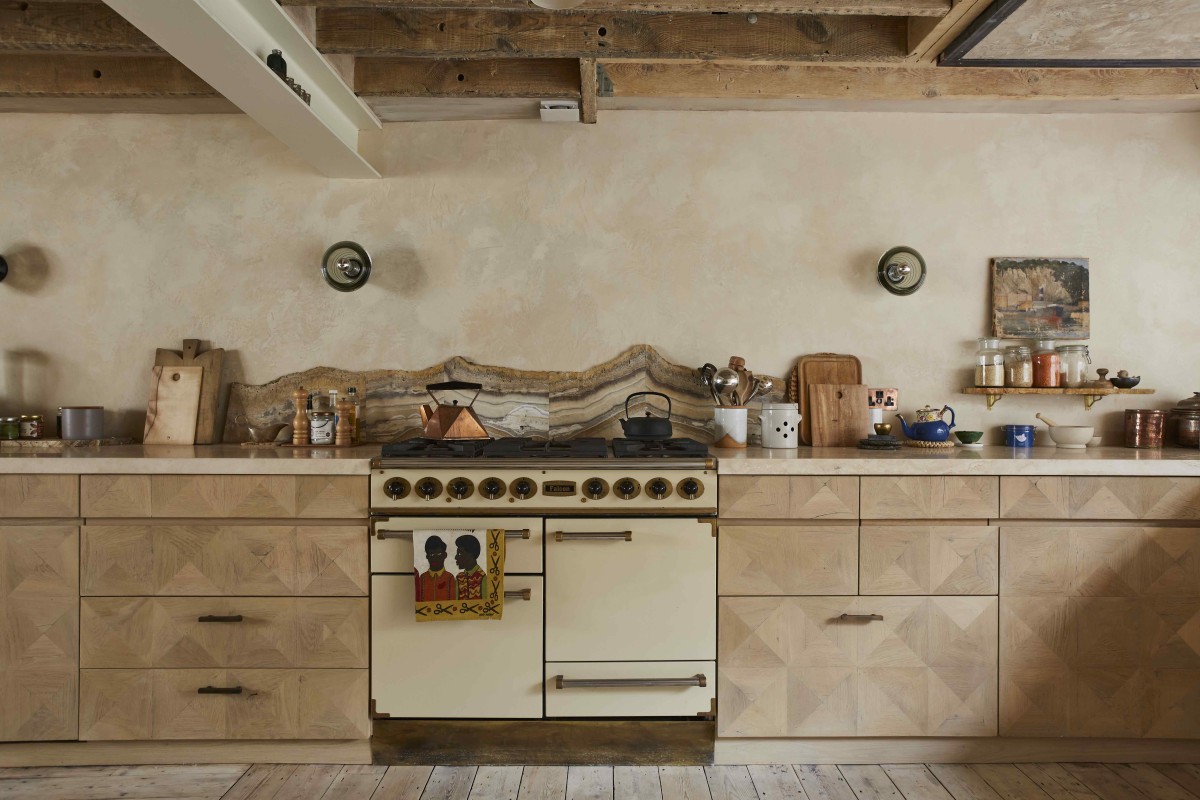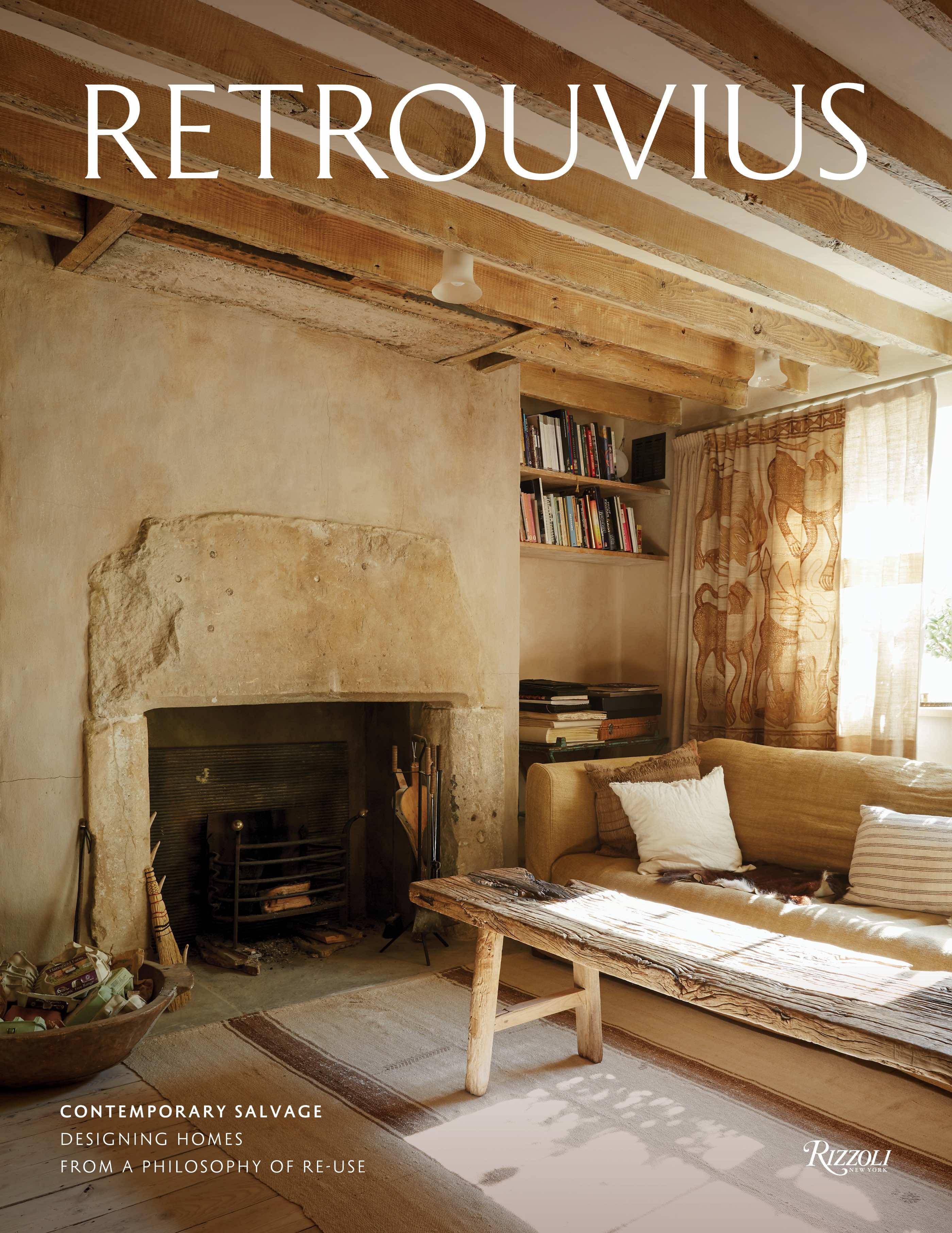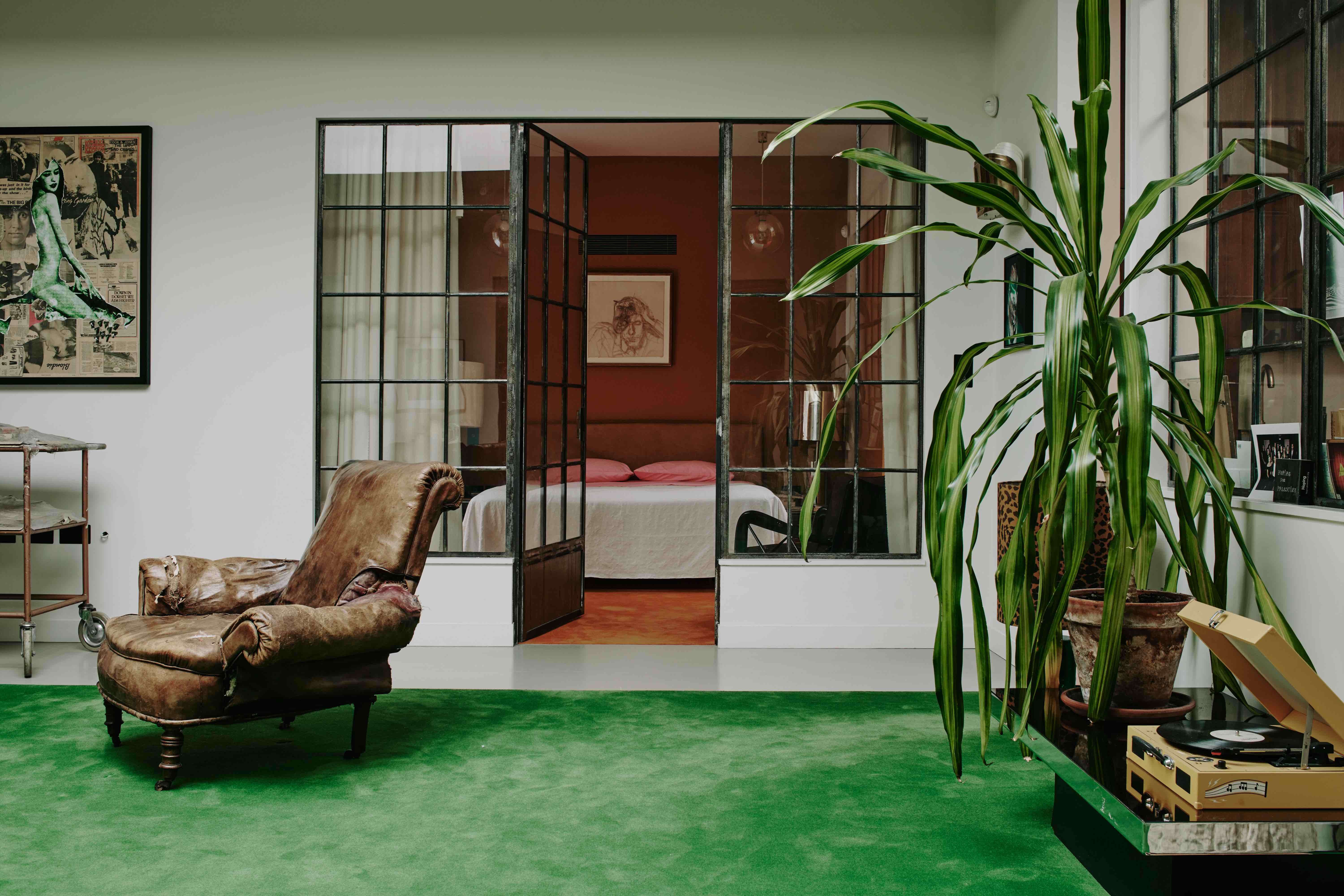‘There are moments in life when you sense you’re destined to meet someone, though the timing isn’t yet right—until, suddenly, all roads lead to them,’ writes Helena Bonham Carter in her foreword, setting the stage for the serendipitous, personal approach Maria Speake brings to homes designed with salvage. Though Helena Bonham Carter has played many witches over the years, she admits she has never possessed the gift of seeing through walls and sensing a place’s energy the way Maria does. This glimpse into the Retrouvius magic reveals two distinct yet symbiotic ventures: a salvage company that sources materials for reuse and a design practice that brings them to new life. In doing so, it brings fresh, contemporary appeal for the old and possibility in the overlooked.
‘Re-used materials have a tactile personality, carrying memories and feelings that root us in something real. However, the true value of materials and design lies not just in their novelty, but in their capacity to evolve and endure.’ - Maria Speake
Windows reclaimed from Battersea Power Station were used throughout Bella Freud's home, photograph © Michael Sinclair
From big-picture sustainability drivers that have earned Maria Speake recognition as a leader in design, to her personal desire to create well-planned and interesting homes, the book instills respect for materials, both their past and their future. Maria’s insights, gained through her relationships with both clients and their buildings, are presented in fourteen projects selected to showcase diverse homes, locations, and briefs. The solid design methodology inspires readers with unusual architectural features, innovative reuse, design savviness, and humour.
Retrouvius cofounder, Adam Hills, delves into the realness of reuse in his chapter about The Salvage System. From their lives as young architecture students in Glasgow in the late 1980s and early 1990s to the present day, Adam chronicles how the salvage scene, motivations, and challenges have evolved.
Today, ‘many of the high-street DIY warehouses have “salvage style” items, from flooring to lighting with fake patina,’ Adam notes. It is true that the Retrouvius “look”—continually changing but with staple materials, such as teak worktops and copper light windows—has helped garner broad appeal in the reclaimed aesthetic. However, “get the look” reproductions completely miss the magic of their design accolades, built not simply on a “look” but on an attitude guided by their philosophy of reuse. ‘This blurring has led Salvo to bring out a “Truly Reclaimed” trademark to help buyers know what they are getting,’ he writes, concluding that the salvage market is not only for building conservationists and restorers, but a resource that must also be harnessed by the contemporary design world. This belief galvanises Salvo too. Reclaimed materials have long been appreciated for their connection to history, but the campaign for real reuse highlights the environmental and social value that only
Truly Reclaimed® materials can offer our future.

Arts and Crafts Dartmoor home, photograph © Theo Tennant, North London home, photograph © Anders Gramer
Beautifully photographed, with images that celebrate ambient light and texture, the book gives readers an impression of the sensory experience of walking into a Retrouvius-designed space. These are stories that aren’t reliant on what was salvaged from where or the era of textiles blended; they are about real homes full of feeling, illuminating the magic and meaning of reuse.



